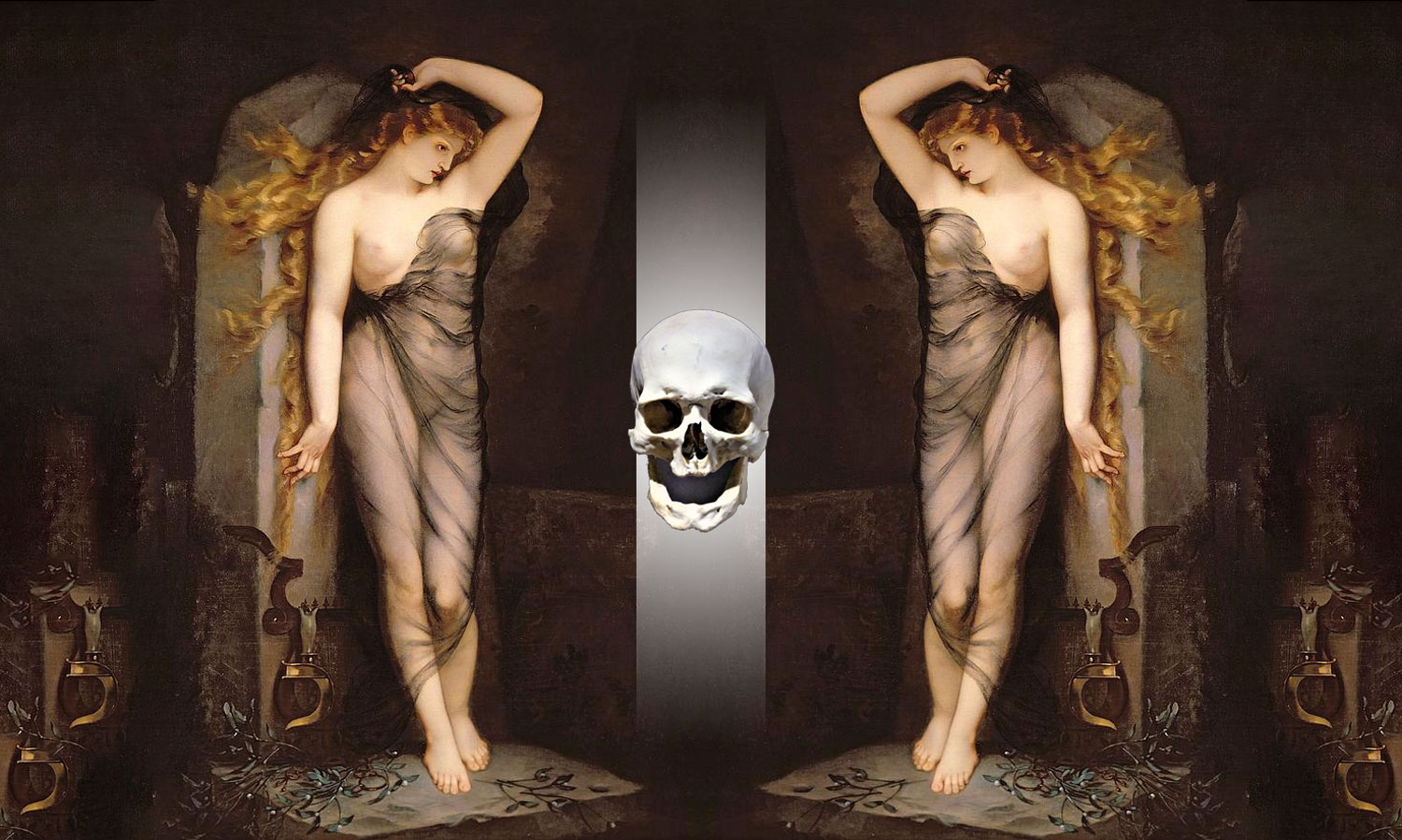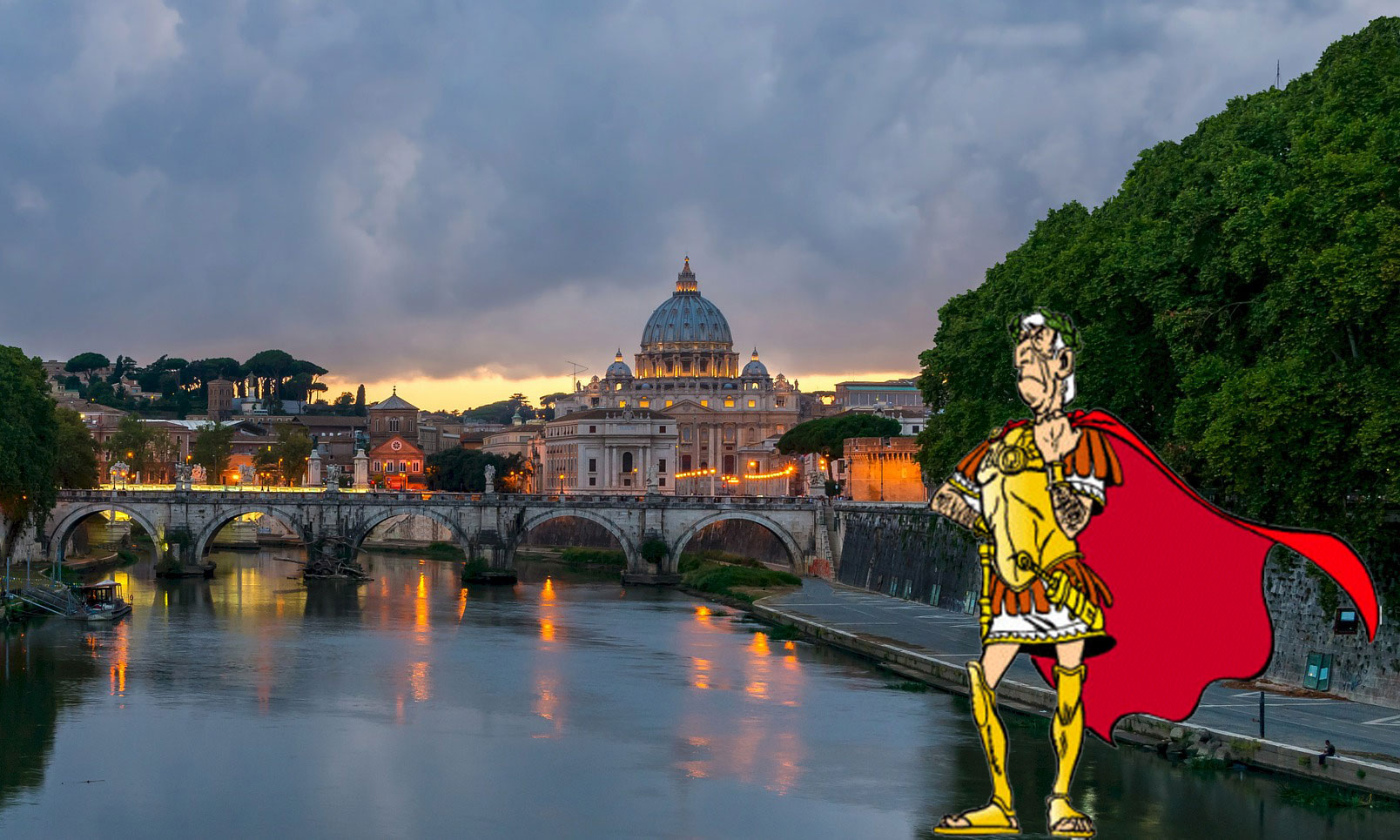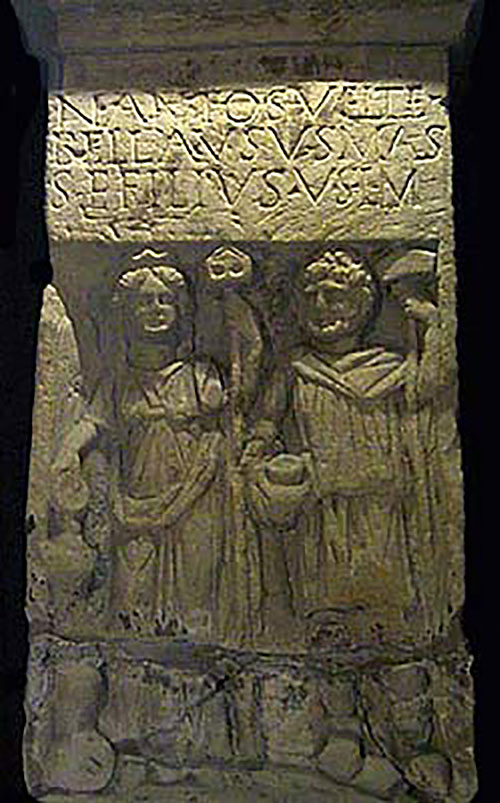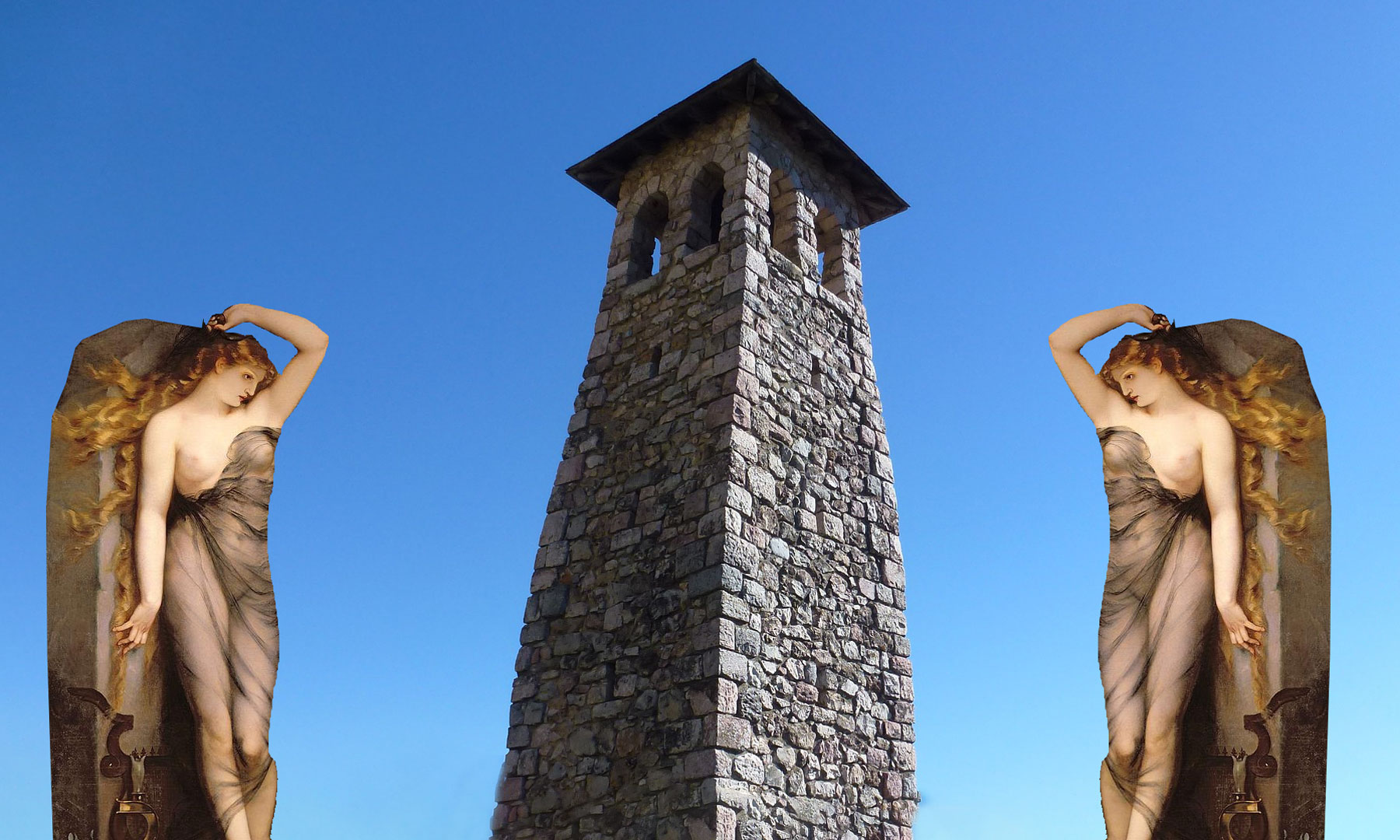
Velleda is a Gallic prophetess of the 1st century of our era. Like most druidesses, she was also a healer and miracle worker. We know almost nothing about her story. To find out, I had to go to her time.
Her name is also written Veleda or even Welleda. It comes from the Gaulish Veled, Irish Filid, which means the healer druid — it is found in the old French: file, the healer, as in the expression la truie qui file. To respect this etymology it would be necessary to write Fileda, the healer. Now the most common spelling is Velleda, I picked it up here.
The Druidesses possessed a magical science older and more terrible than the Druids. This is why the early Christian church recognized women’s right to celebrate Mass, as it appears on an ancient fresco of the Catacombs in Rome.
Druidess or pythia, Velleda lived the crucial period of the first century of our era, when the Christianity of Jesus had not yet imposed itself on other Christian religions, when none of the canonical gospels was yet written. Gaul – or rather Gaul– were then lands of high magic, where magi, druids and enchanters vied with each other in the art of healing and predicting. People came from far and wide to consult the Gallic oracles from as far as Syria, India or Ethiopia. The Druids who are spinning or druids healers were doing wonders, accumulating spectacular healing and even resurrections. Many charlatans took advantage of this context to fool the naive.
This is at least what was claimed in the Roman Empire, which then cultivated the worst image of Gaul, yet cultural flagship of this corner of the world. For Rome, any non-Romanized country is necessarily wild; the Gauls practiced human sacrifices, tortures to death and other barbaric customs. All these facts were greatly exaggerated by the Roman tribunes, who wished to show this people in a hateful light. Thus Rome posed as a savior and a civilizer, which justified the conquest by Julius Caesar, barely a century earlier.

The reality was very different. Gaul sheltered for centuries a refined civilization, whose crafts, artists and fashion were appreciated throughout the Empire, goldsmith, jewelery and weaving that were school to the east. The sons of the family came from all over the Empire to study science and knowledge hidden in druidic universities with a great reputation. But if Rome had recognized these facts, its military aggression against Gaul would have appeared in its true light: pillage pure and simple. Vae victis, Woe to the vanquished, as the other says.
Velleda lived in a magical land, Germanic Gaul. A country whose landscapes she knew nothing about, locked up in turn by parents anxious to protect her interests … or theirs. Velléda was thus recluse in a tower on the Lippe, affluent of the Rhine, in the region of Dortmund. Here is what Wikipedia says, which this time is not talkative, neither in its French version, nor in its German version.
“Daughter of Segenax, she was of the Bructéres nation and lived in a tower on the Lippe, exercising an immense influence over all the Germanic populations: thus Tacitus reports that the inhabitants of Colonia Claudia Ara Agrippinensium (Cologne) entrusted him with the arbitration their conflict with the Tencterians, a Germanic tribe living outside the limes, that is to say beyond the borders of the Roman Empire, considered as a living goddess, in constant communication with the gods Sucellus and Nantosuelte, the envoys of both parties were not admitted in his presence, and the prophetess rendered her judgment “through her parents, as she did every time her oracle was asked. “In an inscription found at Augusta Rauricorum (modern Augst), Sucellus is identified with Silvanus” (wikipedia)
“Tacitus makes him play in the riot of the Batavians against Vespasian in 70 as important a role as that of Civilis, but we do not know if she simply prophesied the rebellion or had a more active role.A show of force operated by nine legions under the Command of Gaius Licinius Mucianus put an end to the rebellion General Petilius Cerialis captured Civilis, but he treated the rebels mercifully, and Velleda was not disturbed.A brief excerpt from Stace establishes that Velleda, a prisoner in 77 or 78 of the Roman general Caius Rutilius Gallicus, was brought to Rome, where she lived, it seems, a few years A Greek epigram found in Ardea, south of Rome, makes fun of its magical powers.” (wikipedia)

That’s about all we know. To flesh out these laconic information, I had to go there. Here is the story of my quest. Velleda was worshiped as a goddess, and her sacred status was further strengthened by her isolation in this tower. The image of a young virgin locked up in a tower will be resumed and developed in many medieval tales and legends. Here we are, it seems, at the origin of this myth. I believe that it was Velléda who served as a model and initial archetype. Each tower, guarded or not by a dragon, will become Velleda’s tower, which strict parents have locked up to protect his virtue. In any case, this romantic legend of the young and beautiful virgin in his tower touched Chateaubriand to the point that it made it appear in one of his novels, The Martyrs, that he wrote in his property of the Wolf Valley In this book, Velléda has only a very small role, but Châteaubriand was keen on her. In his Wolf Valley estate, he built a tower to which he gave the name of the Gallic prophetess.
 The only persons admitted to Velleda were his parents. She has never seen other human beings than her father and mother, whom she doubtless confused with the gods who visited her. Indeed, the young sibylle spent her days in a state of euphoria that some would call mystical trance. No doubt the foods and herbal teas prepared by his parents played a role. In her hallucinated trance, Velléda worshiped the Gaulish god Sucellos, whom the Romans call Sucellus. The lover of the language of the Oisans prefers the Gallic name. Sucellos was armed with a magic hammer, one more, and deserves to be included in the pantheon of deities with magic weapons. It starts with Shiva and his bomb, Yahveh and his, then it goes on with Zeus and his thunder, Osiris and his crowns, Thor and his hammer, Cuchulainn and his Gae Bolga, and it goes on with the brave Roland and his Durandal, King Arthur and his Excalibur!
The only persons admitted to Velleda were his parents. She has never seen other human beings than her father and mother, whom she doubtless confused with the gods who visited her. Indeed, the young sibylle spent her days in a state of euphoria that some would call mystical trance. No doubt the foods and herbal teas prepared by his parents played a role. In her hallucinated trance, Velléda worshiped the Gaulish god Sucellos, whom the Romans call Sucellus. The lover of the language of the Oisans prefers the Gallic name. Sucellos was armed with a magic hammer, one more, and deserves to be included in the pantheon of deities with magic weapons. It starts with Shiva and his bomb, Yahveh and his, then it goes on with Zeus and his thunder, Osiris and his crowns, Thor and his hammer, Cuchulainn and his Gae Bolga, and it goes on with the brave Roland and his Durandal, King Arthur and his Excalibur!
Sucellos carries a magic hammer, sometimes replaced by a sickle. The sickle and the hammer, already! With the help of his hammer, Sucellos can kill as well as heal, drive mad, wake up, and even resurrect the dead, as his priestess Velleda did. Thor’s hammer is endowed with the same magic. In my opinion, these are technological weapons, using electronics, as explained in the articles previously cited in links. Sucellos had for his part a certain Nantosuelte. This god and his goddess were, I am afraid, the little girl’s own parents, who, to be a clairvoyant, was none the less gullible. The father and the mother disguised themselves as Sucellos and Nantosuelte, and climbed the staircase opposite the tower on the Lippe to bring to the poor the food addicts and requests for visions.
The proconsul Maximus Minus wants to know if the harvest of vinum will be bonum this year. The widow Caliquot wants to know if her sparkling white wine has a future. The warrior Marchandos wants to know if it will rain during the next war, to take an umbrella because the coat of mesh in the rain, it rust. The prefect of Gaul wants to know if he has a question to ask, it has been bothering him since a young age. His wife wants to know what time he will go home for dinner because it is starting to do well. And I want to know what I’m doing here. In short, everyone wants to know, Velléda is at the end of his power, the poor crazy can not any more Sucellos, his father, she always has the same image in the head, a tower erected near his native Lippe.
At that moment I realized that I had just absorbed a full bowl of drugged food for the seer recluse. So I stuck nose in the language of Oisans just before losing consciousness. It does not matter, forget the last paragraph, the rest is better, I wrote it before my coma.

After Three Years
![Portrait de Paul Verlaine par Frédéric Bazille [Public domain], via Wikimedia Commons --- SKI, Stef Kervor Infographie pour Eden Saga](https://eden-saga.com/wp-content/uploads/PaulVerlaine-FrédéricBazille-ski-1900X1141px.jpg)


